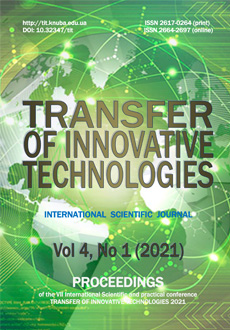Stochastic model and method of optimization of operating modes groups of artesian wells in water supply systems
DOI:
https://doi.org/10.32347/tit2141.0309Keywords:
artesian well, water supply system, optimization, stochastic modelAbstract
Water supply of large cities is carried out, as a rule, from open reservoirs - lakes, reservoirs, large rivers, ie from sources with significant water reserves. In this case, the water supply scheme includes: pumping stations of the first rise, which take water directly from the water; water treatment system (purification); pumping stations of the second and third rise, pumping clean water over long distances and supplying it to settlements [1]. If the settlement is located in an area where there are no large open water sources, or the geographical location of the settlement allows the use of groundwater, in which case artesian wells are used as a source of water supply. Usually small settlements are supplied with water from artesian wells. Artesian wells are widely used for water supply of villages, industrial water supply, for irrigation (irrigation systems), in the mining industry, to reduce the level of groundwater. The advantage of using artesian wells to supply the population with drinking water is that the water is extracted from great depths and purified using natural filters [2]. Thus, the cost of water treatment is significantly reduced. The disadvantage of using artesian wells is usually low productivity of the well, the strong dependence of water volumes in the well on climatic and weather conditions, depletion of the well as a result of large-scale construction or extraction of natural minerals such as shale gas [3].
References
Замятин Н.В., Иванов Е.О. (2011). Автоматизация расчета производи-тельности напорных артезианских скважин в среде Simulink. Управление, вычисли-тельная техника и информатика. Доклады ТУСУРа, 2(24), часть 3, 154-158.
Замятин Н.В., Иванов Е.О. (2015). Нечеткая советующая система контроля артезианских скважин. Управление, вычислительная техника и информатика. Доклады ТУСУРа, №4(38), 178-181.
Маругин А.П., Садовников М.Е. (2001). Система диспетчерского контроля и управления насосами артезианских скважин. Известия Уральского государст-венного горного университета, 12, 101-104.
Полищук C.И., Кутрань И.С. (2011). Экономия электроэнергии в системах артезианского водоснабжения. Энергосберегающие технологии, 5(87), 79-82.
Ван Цзиньлон, Золотухин А.Б., Чжоу Цяофэн, Ибрагимов Ж.Ж., Чжан Ниншенг (2018). Оптимизация работы высокотехнологичных скважин. Neftegaz.RU, 6, 39-45.
Downloads
Published
How to Cite
Issue
Section
License

This work is licensed under a Creative Commons Attribution-NonCommercial-NoDerivatives 4.0 International License.
Our journal abides by the CREATIVE COMMONS copyright rights and permissions for open access journals.
Authors, who are published in this journal, agree to the following conditions:
1. The authors reserve the right to authorship of the work and pass the first publication right of this work to the journal under the terms of a Creative Commons Attribution License, which allows others to freely distribute the published research with the obligatory reference to the authors of the original work and the first publication of the work in this journal.
2. The authors have the right to conclude separate supplement agreements that relate to non-exclusive work distribution in the form in which it has been published by the journal (for example, to upload the work to the online storage of the journal or publish it as part of a monograph), provided that the reference to the first publication of the work in this journal is included.




